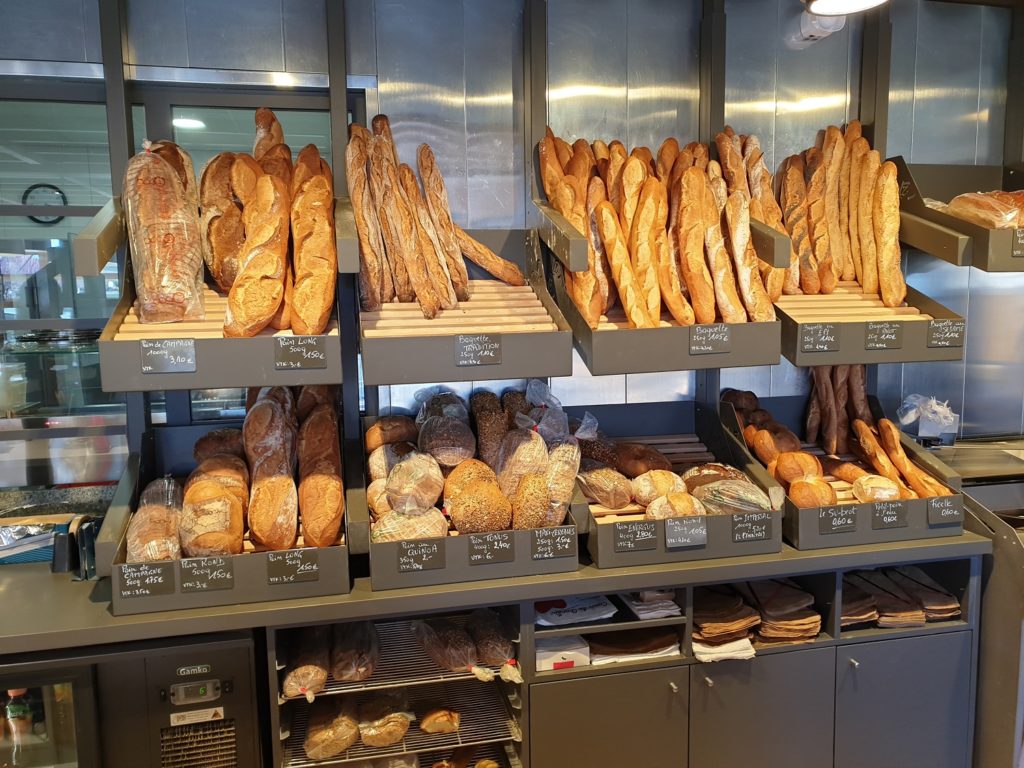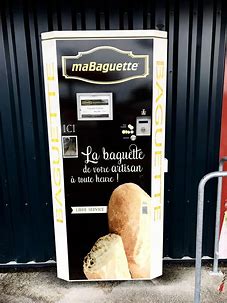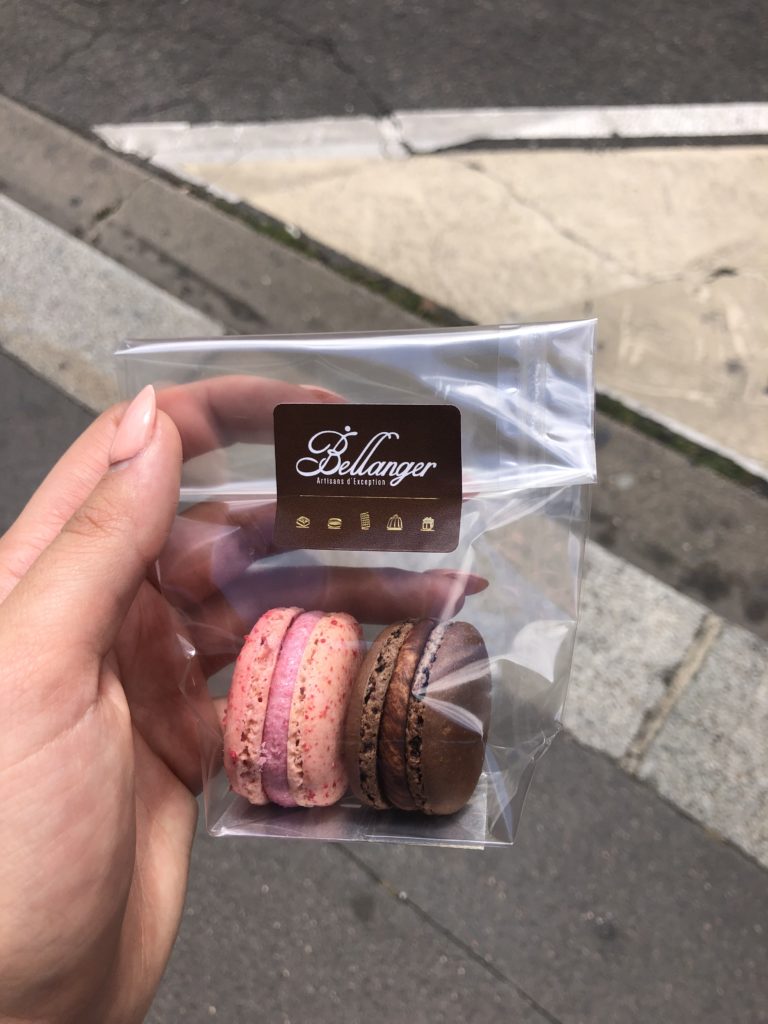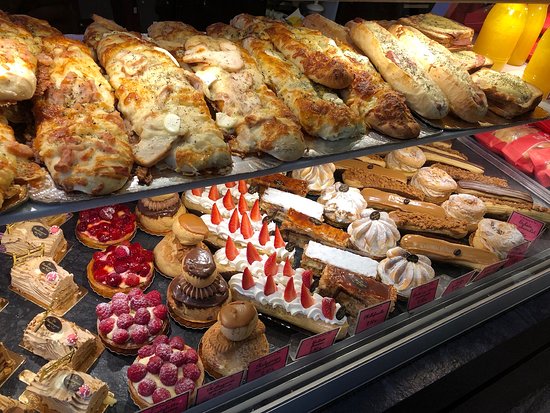Based on my prior stereotypical expectations of the French diet, I expected to encounter a fair amount of bread, as baguettes are often the symbol of French cuisine in American media, yet what I have come to quickly realize is that bread is truly a significant, foundational part of the French diet. In fact, à mon avis (in my opinion), the French have perfected the art of bread-making after over more than a couple centuries of practice.
Thus far, one of my favorite ways of exploring the city has been venturing with friends to a different boulangerie, or bread shop, each day for lunch. In the city of Tours, you can’t travel more than a block without coming across a boulangerie, each attracting the eye and the nose as much as the next. Peaking through the boulangerie windows, you’ll typically find an array of beautiful pastries to draw in customers. There’s the mille-feuille, a layered dessert of puff-pastry and custard, chocolate eclairs, macarons, fruit and custard tarts, and more. You also can’t ignore the other pastry staples like the pain au chocolat, a croissant with a chocolate filling. Above all, on the wall behind, you find the wall of breads, a variety of artisanal loaves which send the nutty aroma that lingers all throughout the shops. Most notably, there is the baguette, which directly translates to ‘stick’ or ‘baton’ in English, as well as the brioche, a softer, sweeter loaf made with eggs and butter, and the pain de campagne, the ‘country bread’ that is a type of sourdough and typically shaped round. The bread is then accompanied by a plethora of sandwich options, usually with a type of fresh cheese, cured meat (such as ham), tomato, or added sauce. My personal favorite right now has been a sandwich called ‘le végé brie’. The base is a whole grain sourdough bread with pesto, fresh sliced brie cheese, tomatoes, and leafy greens. If I’m being honest, it is probably the best sandwich I have ever had in my life (especially compared to the peanut-butter and jelly sandwiches I was used to eating for school lunches from grade school into college).
Yesterday, my professor took our class on a field trip to a local institution centered around cuisine education. We dove into cookbooks and guidebooks which particularly opened my eyes to the aspect of precision involved in the baguette-making process. The bread’s final quality is of the utmost importance, so french bakers make sure first and foremost to pay close attention to where they source the flour. During the process, bakers measure, mix (to develop the gluten), divide, proof, mold, proof again, score (create thin slices on the top), steam bake, and then bake the bread normally. In the end, it is critical that the bread be crispy on the outside and chewy on the inside, as well as 60 to 70 centimeters long. In terms of ingredients, there is actually a French law, created in 1993, that states the traditional baguette must be baked at the location where it is sold and only consist of wheat flour, water, yeast, and salt.
At the local train station in Tours, I actually found a baguette vending machine. While I let out a chuckle at first, it made me realize just how ubiquitous the baguette, and bread in general, are in France both throughout the country tangibly and also within its culture. I have noticed that my host mom has incorporated bread into nearly every meal she has served to me: baguette and a slice of brioche accompanied by jam and butter at breakfast, meat and salad with baguette slices at dinner. She also told me how she only gets her bread, as well as her vegetables, fruits, and meats, from the market, which is entirely locally sourced, so it is clear how quality of the products and the bread in particular are incredibly important to her. In fact, she even apologized to me when she felt that the bread was a tiny bit stale (which had gone completely unnoticed to me).
I learned a bit of the history behind the French bread and the baguette. Bread was a staple of the French diet dating back to the 1700’s, requiring almost ¾ of the average household budget at the time. The color of the bread, based on the flour from which it was sourced, began to represent social class. The rich had access to the fine, white bread, whereas the poor and working class were left with the darker grain bread. After a period of economic struggle, the poor faced starvation and lacked quality bread, which of course had been the base of their diet. This essentially incited a national revolution, and after the fact, a legislation was passed that proclaimed there would be no difference between bread served to the rich and the poor, a “bread of equality”. The number of bread specialists and artisans began to increase. Eventually, a law was passed that prohibited workers and bakers from working before 4am, so the bakers created a baguette which did not require overnight preparation. As a result of this law and the invention of the steam oven at this time, the baguette quickly began its journey to becoming a staple in the French kitchen.
In general, it is clear just how valuable the baguette and artisan bread remain in the French identity. There are countless common colloquial expressions centered around bread such as ‘long comme un jour sans pain’ (long/difficult like a day without bread) and ‘partir comme des petites pains’ (selling like bread (quickly)). President Emmanual Macron sums up the value of bread perfectly in his comments, “The baguette is the envy of the whole world… This excellence and this savoir faire must be preserved.”




